Thrust vectoring is an advanced technology used in aircraft, missiles, and rocket propulsion systems to enhance manoeuvrability and control.
Let’s Delve into the Best Thrust Vectoring Technology in contemporary aircraft and missiles. Unlike traditional engines that direct their exhaust straight back, thrust vectoring allows for the redirection of exhaust gases, enabling the vehicle to alter its direction more dynamically and quickly, along with the attitude or angular velocity of the vehicle.
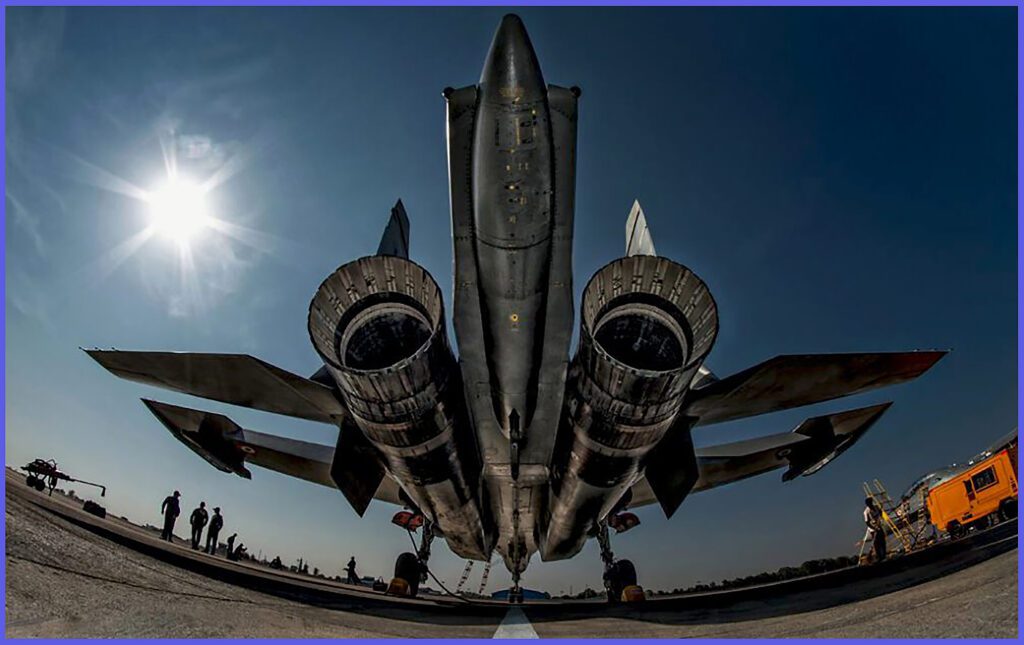
By manipulating the direction of thrust (also known as thrust vector control or TVC), either by rotating the engine nozzle or using vanes or paddles within the exhaust stream, thrust vectoring provides additional control over pitch, yaw, and roll movements.
This capability is precious in situations requiring rapid changes in direction, such as combat scenarios for fighter jets or precise landing manoeuvres for spacecraft.
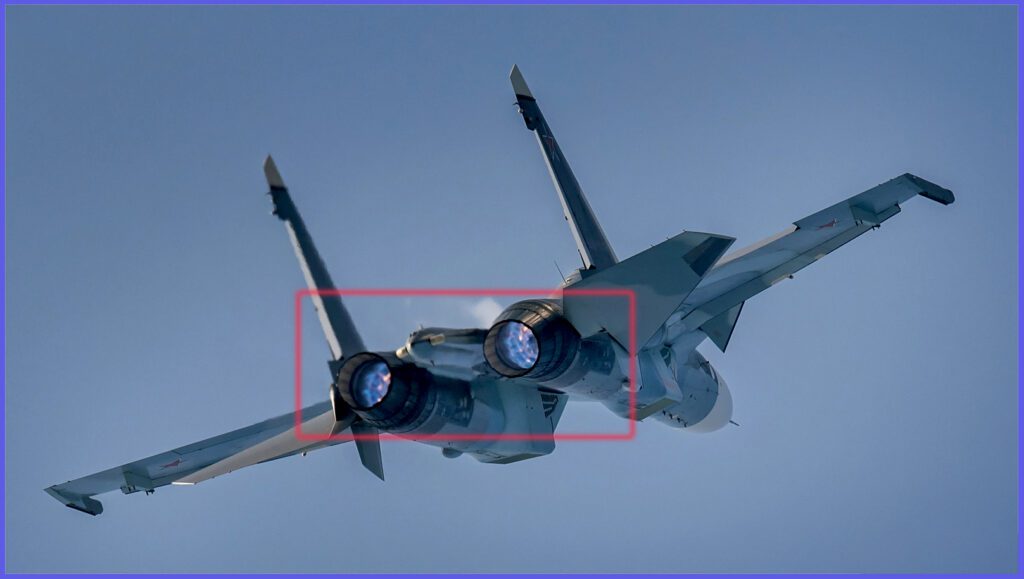
Thrust vectoring offers numerous advantages, including greater agility, enhanced stability, and better performance across various flight conditions. For rockets and ballistic missiles operating outside the atmosphere, where aerodynamic surfaces don’t work, thrust vectoring is crucial for attitude control.
It also allows aircraft to perform sharp turns, avoid threats more efficiently, and remain controllable in difficult situations, such as during close combat, where evading incoming missiles or gaining a positional edge over adversaries is essential.
Thrust vectoring technology continues to evolve, with ongoing research and development aimed at optimizing efficiency, reducing weight and complexity, and expanding its applications across various aerospace platforms, including both manned and unmanned vehicles.

Several types of thrust vectoring mechanisms are used in rockets and missiles to control their flight trajectory. Some of the commonly used thrust vectoring methods include:
Gimbaled Engine Nozzles:
Gimbaled thrust is a propulsion technique where the engine nozzle pivots, allowing the direction of thrust to be controlled. This enables rockets, spacecraft, and certain missiles to adjust their orientation and trajectory mid-flight without separate control surfaces.
By tilting the exhaust, gimbaled thrust provides precise control over pitch, yaw, and roll movements, enhancing manoeuvrability, stability, and accuracy, which is crucial for tasks like orbital manoeuvres and trajectory adjustments. This technology is essential for precise navigation and control in aerospace applications.
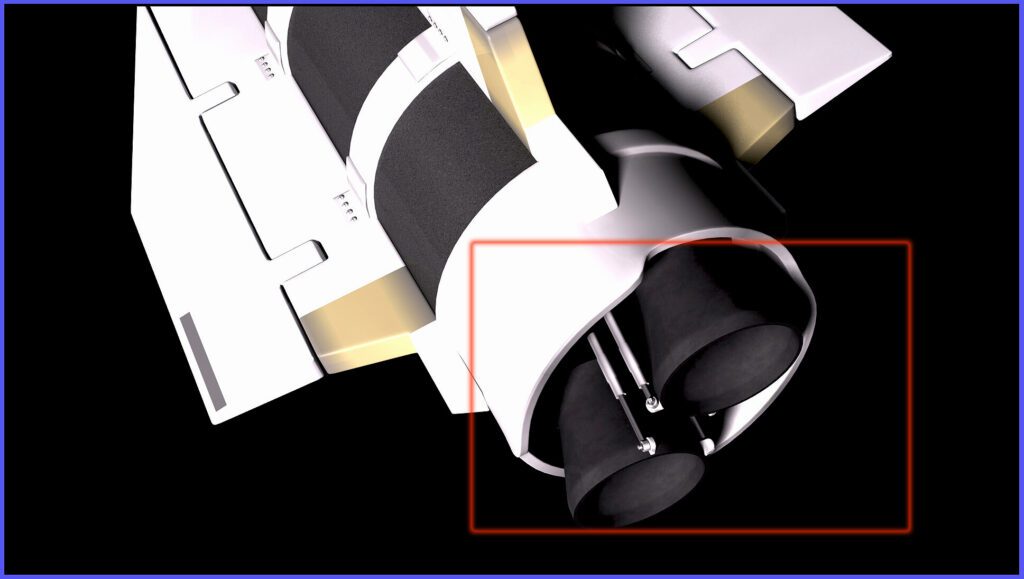
Propellant injection/Fluid Injection Thrust Vector Control (FTVC):
An alternative thrust vectoring method used in solid propellant ballistic missiles is fluid injection thrust vector control (FTVC). In this method, the rocket nozzle remains fixed, but a fluid such as water or gas is injected into the exhaust flow from nozzles positioned around the missile’s aft end.
By regulating the amount and flow of the injected fluid, the exhaust stream’s direction can be altered, providing the vehicle with the ability to control its flight path with precision.

Exhaust vanes / Jet vanes:
Also known as aerodynamic or control vanes, are components used in tactical missiles to control their flight path. These vanes are typically mounted on the exhaust nozzle of the missile’s rocket motor. By deflecting the exhaust gases, jet vanes can alter the direction of thrust, enabling the missile to change its course and manoeuvre in flight.
Jet vanes are particularly common in solid-fuel rocket motors, where they provide a simple and effective means of guidance and control. By deflecting the exhaust gases asymmetrically, jet vanes can induce yaw, pitch, and roll motions in the missile, allowing it to adjust its trajectory and track its target accurately.

One advantage of jet vanes is their simplicity and reliability compared to other guidance systems. They require no complex electronics making them well-suited for use in rugged tactical missiles designed for fast, agile maneuvers. However, jet vanes do have limitations.
They are most effective at lower speeds and altitudes and may lose effectiveness at higher velocities due to aerodynamic forces.
Despite these limitations, Jet vanes remain a widely used and effective method of guidance and control in tactical missiles, offering a balance of simplicity, reliability, and performance.

Jet Vanes Thrust-Vectoring in Modern Atmospheric Tactical Missiles
Jet vanes thrust-vectoring is a crucial feature in modern atmospheric tactical missiles. These vanes, mounted within the exhaust stream, allow precise control over the missile’s flight path by deflecting exhaust gases. Some contemporary air-to-air missiles, such as the AIM-9X Sidewinder, AAM-5, ASRAAM, R-73, PL-10, MICA, IRIS-T, and Astra, utilize this technology.
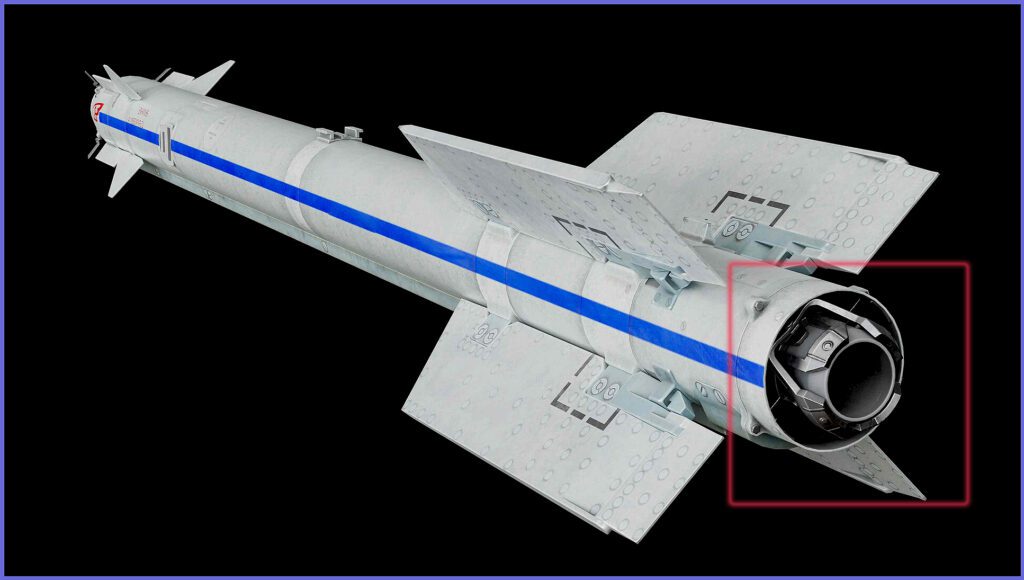
Additionally, surface-to-air missiles such as the Russian 9K330 Tor, the Chinese HQ-9 (a derivative of the Russian S-300), and the Indian-origin Quick Reaction Surface-to-Air Missile (QRSAM) and Barak 8 also employ jet vanes thrust-vectoring.
Anti-tank missiles such as the Indian MPATGM, the German PARS 3 LR, and the French Eryx also utilize jet vanes thrust-vectoring. Overall, jet vanes thrust-vectoring plays a vital role in maximizing the lethality and operational capabilities of tactical missiles, ensuring they can accurately engage targets and accomplish their mission objectives with agility and precision.

In addition to these, various other missiles also employ thrust-vectoring technology: Missiles such as the Indian-origin Akash, the Franco-Italian Aster 15 and Aster 30, and the Russian 9M96E of the S-400 surface-to-air missile, as well as the 9K720 Iskander short-range ballistic missile and the BrahMos Cruise missile, utilize thrust vector control (TVC) to guide themselves toward the target until the very last moment of impact with precision.
This technology enhances manoeuvrability, enabling the missile to execute sharp turns, adjust its trajectory, and effectively evade enemy defences.

Revolutionizing Air Combat: Thrust Vectoring in Modern Military Aircraft
Thrust vectoring technology in modern military aircraft represents a peak in aerospace engineering, transforming how these aircraft maneuver and perform in combat situations. Initially developed to provide vertical (VTOL) or short (STOL) takeoff and landing capabilities through upward vertical thrust, its potential in combat became clear by the late 20th century.
Thrust vectoring allows aircraft to execute complex manoeuvres by altering the direction of exhaust gases, offering enhanced control over orientation and trajectory compared to conventional engines that expel exhaust gases solely rearward.
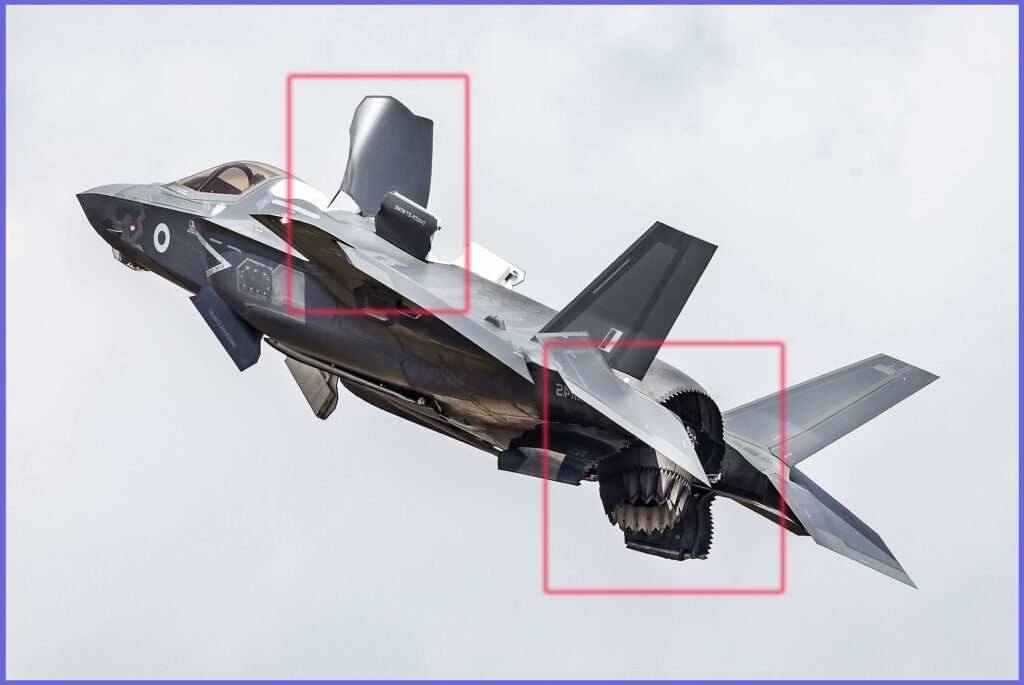
To perform dynamic instantaneous turns, which can lead to 7g+ forces, aircraft without thrust vectoring must rely solely on aerodynamic control surfaces such as ailerons, elevators, and rudders. However, aircraft with thrust vectoring nozzles can achieve most of their super-agile manoeuvring through these nozzles, using control surfaces to a lesser extent.
The British Harrier was the world’s first operational fighter jet with thrust vectoring, enabling VTOL (vertical take-off and landing) capabilities, followed by the Soviet-origin Yakovlev Yak-38 and Yakovlev Yak-141. As of 2024, only two operational STOVL/VTOL aircraft exist: the McDonnell Douglas AV-8B Harrier II and the Lockheed Martin F-35B variant.
However, it is important to note that these aircraft are not designed to execute complex manoeuvres with unprecedented agility and precision. They are designed for aircraft carrier operations, enabling shorter takeoffs and landings.

Thrust-vectoring flight control (TVFC) is achieved by deflecting the aircraft’s jets in one or more directions, such as pitch, yaw, and roll. In extreme cases, this deflection creates the necessary forces and moments to fully control the aircraft’s flight path without relying on conventional aerodynamic flight controls (CAFC).
Currently, the most successful operational fighter jets using TVC include the Russian-origin Sukhoi Su-35S and Su-57 Felon for the Russian Air Force, as well as the Su-30MKI/MKM, operated by the Indian Air Force and Malaysian Air Force.
By adjusting the thrust direction, often through movable nozzles or vanes, these aircraft can perform intricate manoeuvres with unmatched agility and precision.
This enhancement boosts their aerodynamic capabilities in both subsonic and supersonic flight, facilitating swift changes in direction, tighter turns, maintaining near-zero airspeed at high angles of attack without stalling, and ensuring enhanced stability in intense combat scenarios.
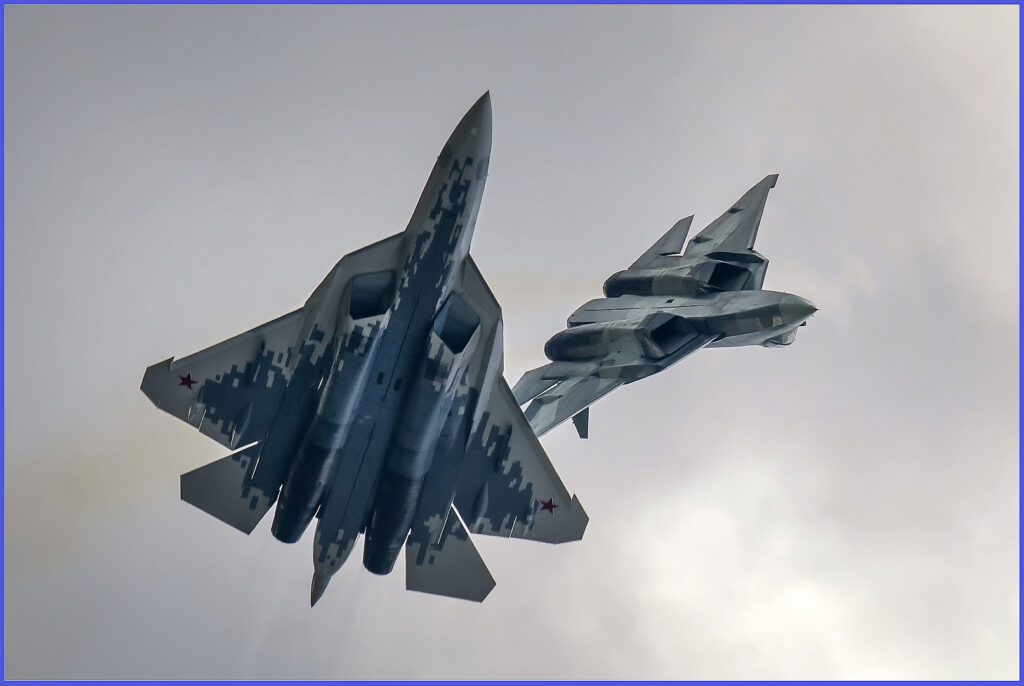
Thrust vectoring technology offers numerous tactical advantages in aerial combat, including increased survivability, enhanced evasion tactics, and improved weapon delivery accuracy. It allows pilots to outmanoeuvre adversaries more effectively, maintain situational awareness, and gain the upper hand in engagements.
Thrust vectoring systems, like those found in the Lockheed Martin F-22 Raptor, enhance aircraft versatility and stealthiness, crucial for various mission types.
As military aircraft evolve with 6th generation technologies, thrust vectoring is key to eliminating vertical tails in future designs, driving innovation in aerial warfare. Its integration underscores a commitment to air dominance across air-to-air and air-to-ground operations in dynamic combat environments.
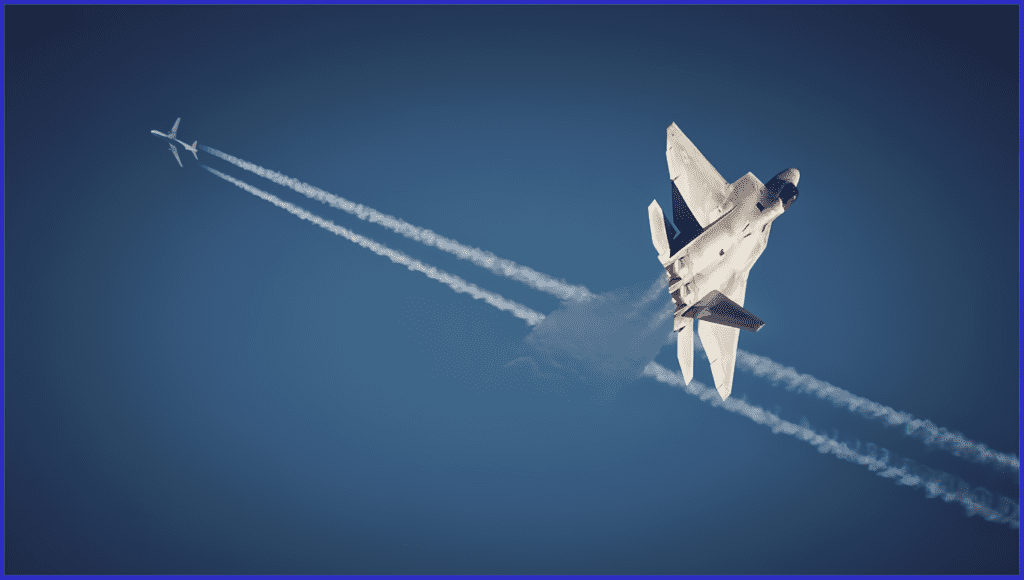
In conclusion, thrust vectoring technology stands as a cornerstone of modern aerospace innovation, enhancing the manoeuvrability, agility, and precision of both contemporary military aircraft and tactical missiles.
Whether enabling precise control over flight paths in missiles or revolutionizing aerial combat capabilities in fighter jets, thrust vectoring plays a pivotal role in shaping the landscape of modern warfare.
As research and development efforts continue to optimize efficiency and expand applications, thrust vectoring remains a vital asset for ensuring air dominance and mission success across a diverse range of operational scenarios, driving ongoing advancements in aerospace engineering and combat effectiveness.

